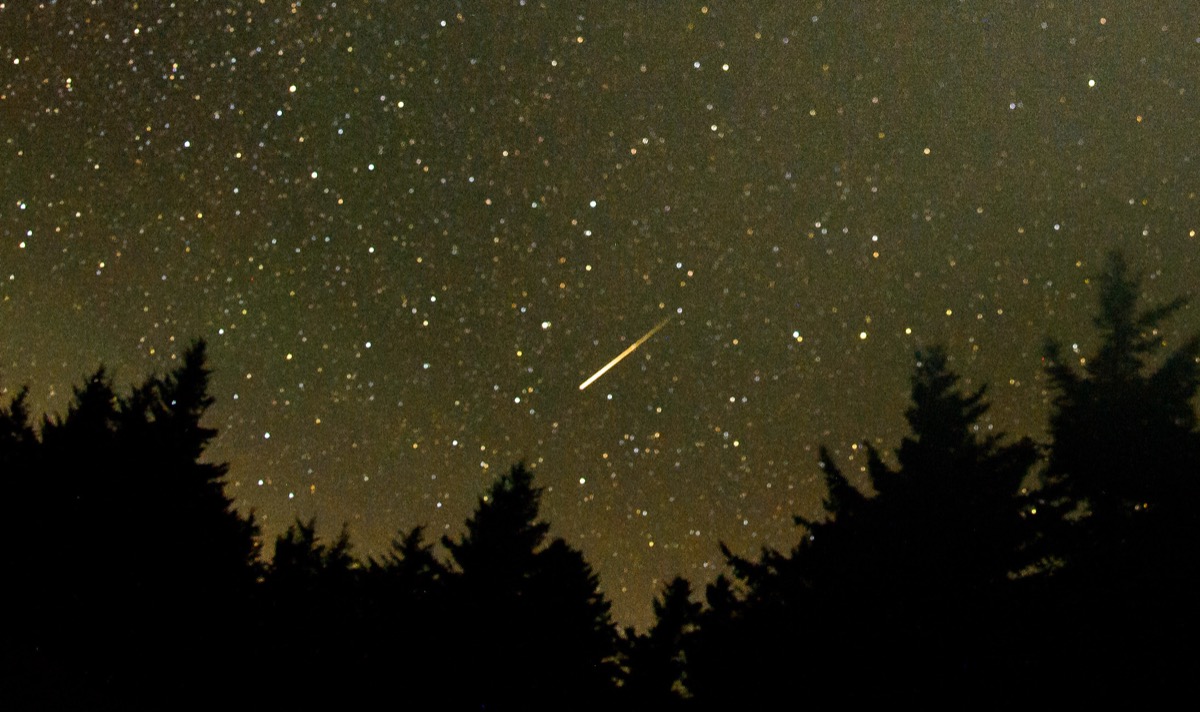If you live somewhere particularly dark, or at least have access to somewhere like that relatively nearby, it’s much easier to catch sight of some meteors throughout the year, but for many of us, as light pollution continually increases, it’s mostly the big meteor showers when we catch our chance, and that’s why the start of this year’s Perseid meteor shower is so exciting.
Still, for those of us in the brightest areas, our best chance, with the peak of the Perseids, won’t come until later in August (with the meteor shower overall lasting all the way until August 24), but it never hurts to be prepared! You may already be able to see some meteors as early as tonight. Though the best time for the most frequent meteor sightings is closer to dawn, you can head out to your favorite stargazing spot (a thing everyone has, right? Not just me?) as early as 10PM and keep your eyes glued to the sky.
The Perseids are so named because the point in the sky their trails appear to trace back to is in the constellation Perseus, but you’ll see them all over the sky, so pick a place with as much unobstructed view as possible to give yourself a nice, big patch of sky to stake out. Those trails are also part of what makes the Perseids such a great show, being known not just for a high volume of meteors overall, but for producing fireballs that leave long streaks across the sky, making them not only more visually impressive but less easy to miss. NASA says,
The Perseids, which peak during mid-August, are considered the best meteor shower of the year. With very fast and bright meteors, Perseids frequently leave long “wakes” of light and color behind them as they streak through Earth’s atmosphere. The Perseids are one of the most plentiful showers (50-100 meteors seen per hour) and occur with warm summer nighttime weather, allowing sky watchers to easily view them.
Perseids are also known for their fireballs. Fireballs are larger explosions of light and color that can persist longer than an average meteor streak. This is due to the fact that fireballs originate from larger particles of cometary material. Fireballs are also brighter, with apparent magnitudes greater than -3.
However, if you don’t have hours per night over the next few weeks to spend looking for meteors, the peak will arrive overnight on August 11–12, with a rate of visible meteors as high as 50–100 per hour, depending on the quality of your viewing area. If you’re not sure where the best viewing would be in your area, the International Dark Sky Association’s Dark Sky Finder tool can help you out, and NASA has a web app that will help you figure out what you can expect out of the show in your area.
While you watch, you can also enjoy feeling incredibly small while thinking about the comet the Perseids are actually produced by (not the constellation itself, despite how it appears), 109P/Swift-Tuttle, which NASA says is “almost twice the size of the object hypothesized to have led to the demise of the dinosaurs,” making it the largest object known to cross Earth’s orbit by far. Don’t worry, though. With its long orbit of 133 years, the last time it came around was 1992, and it won’t be back until 2125—and Paul Chodas, NASA’s manager for the center of near-Earth object studies, told Space.com, “Its orbit passes very close to the Earth’s orbit, so that it has been viewed as a hazardous object over the years. Now, we know its orbit very well, well enough to say that we are safe from an impact for many thousands of years.”
Happy meteor hunting!
(image: NASA/Bill Ingalls)
Want more stories like this? Become a subscriber and support the site!
—The Mary Sue has a strict comment policy that forbids, but is not limited to, personal insults toward anyone, hate speech, and trolling.—









Published: Jul 15, 2021 12:08 pm